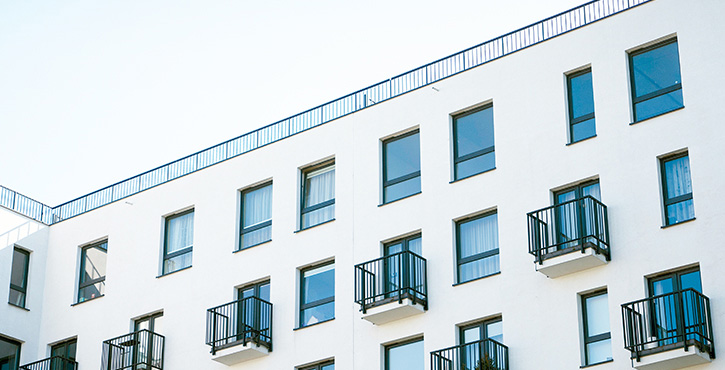Reduce your carbon footprint with a heat pump
There are myriad benefits that come with heat pumps. In addition to being cost-efficient, they’re an environmentally conscious choice that will reduce the amount of greenhouse gases your activities generate. When you choose to install a heat pump in your home, you’ll be enjoying year-round comfort.
In Quebec, energy demands in the winter are at their peak because of heating. That means you could save hundreds of dollars over the long run with a heat pump in addition to doing your part for the planet. Read on to find out how a heat pump can reduce your carbon footprint.
What is a carbon footprint?
First, let’s go over the concept of a carbon footprint. When it comes to slowing down climate change, most experts agree that reducing your carbon footprint is the key to change. Whether you are a large organization or an individual, you can change your energy consumption habits to reduce the impact your activities have on the environment.
The greenhouse gases produced to heat your home increase your personal carbon footprint which in turn contribute to global warming. That’s why small changes such as adopting a heat pump can make a huge difference over 5, 10, and 20 years.
Definitions
According to nature.org, a carbon footprint is “the total amount of greenhouse gases (including carbon dioxide and methane) that are generated by our actions.” This can be applied to an individual, an organization, or even a territory.
Greenhouse gas emissions
Carbon dioxide (CO2) is the main greenhouse gas emitted by the combustion of fossil fuels for transportation and heating purposes. Even though CO2 is the most common greenhouse gas, there are five other types that are harmful for the environment:
- Methane (CH4) from cattle
- Hydrofluorocarbon (HFC) from waste and mines
- Nitrous oxide (N2O) from the coolant and automotive industry
- Perfluorocarbons (PFCs) from air conditioning units
- Sulfur hexafluoride (SF6) from the pharmaceutical industry
The carbon footprint of homes in Quebec
Most of the electricity produced in Quebec is used to heat residential spaces. In fact, heating accounts for 49% of an apartment’s electricity bill. This figure increases to 57% for a single-family home.
According to Hydro-Québec, a heat pump can reduce a home’s electricity consumption by two-thirds! And there are other simple and efficient actions we can all take.
How to reduce your carbon footprint
There are several ways you can lower your household’s carbon footprint. Reducing your electricity consumption, hot water usage, and greenhouse gas emissions are a few examples. Here are a few tips and tricks to help you get started.
Reduce your electricity consumption at home
So many of our daily activities require electricity. To reduce your electricity consumption, you can:
- Unplug electric devices when not in use (hair dryer, video game console, phone charger, TV, etc.)
- Turn off lights when you leave a room and use LED lightbulbs which consume 80% less power than conventional lightbulbs and have a lifespan of at least 15 years
- Don’t use devices (toaster, hair dryer, washer, dryer) during peak hours (6 to 9 a.m. and 4 to 8 p.m.)
- Use an eco-friendly water heater
Reduce your hot water usage
Reducing your hot water usage can help you cut down on water waste and save on your electricity bill. Here are a few ways to use less water:
- Take a shower instead of a bath to use less hot water. Install a low flow shower head and turn off the water while you lather.
- Install a faucet aerator to reduce the flow and turn off the water when you brush your teeth or wash your hands.
- For laundry, use a cold-water detergent. Using cold water cleans your clothes as well as hot water and the savings add up.
- If your dishwasher has an eco-mode, use it as often as possible and wait until it is full to start.
Limiting your shower time and washing dishes and clothing less often are small gestures that can make a big difference.
Use a heat pump to heat your home
Using a heat pump as an alternative to electric heating helps you reduce your carbon footprint and lowers your electricity bill. That’s because a heat pump uses a renewable energy source – heat from ambient air. It also has a Coefficient of Performance (COP) of 3.0 which means it produces three times more energy than it consumes. According to the Canada Mortgage and Housing Corporation (CMHC), a heat pump produces between 3 and 10 kWh for each kWh consumed.
A heat pump can help reduce your carbon footprint
It is worth repeating that a heat pump is an efficient way of reducing your energy consumption and lowering your heating bill! Here are some of the many benefits of using a heat pump to heat your home.
It will lower your electricity bill
Using a heat pump to heat your home in the winter and cool it in the summer can reduce your heating bill by 30%. That could translate into hundreds of dollars in savings ever year. And installing a heat pump could make you eligible for the Rénoclimat program which gives you a preferential rate with Hydro-Québec under certain conditions.
It will help you reduce your carbon footprint
A heat pump uses heat from the ambient air to heat your home by capturing, compressing, and distributing it using a ventilator. According to Natural Resources Canada, the earth and air outside always contain a bit of heat, even in the winter. A heat pump is designed to capture this heat in temperatures as low as -15°C.
The process is reversed in the summer. The heat pump captures the cold in the outside air and distributes it inside using the ventilator. In this instance, the device acts as an air conditioner.
Visit our website to see our different heat pump models available for purchase or lease.
Rebate programs
Finally, purchasing a heat pump can make you eligible for government rebates under certain conditions. Find out more in our article on the topic.
Thinking of getting a heat pump? Contact our team to benefit from expert advice.




